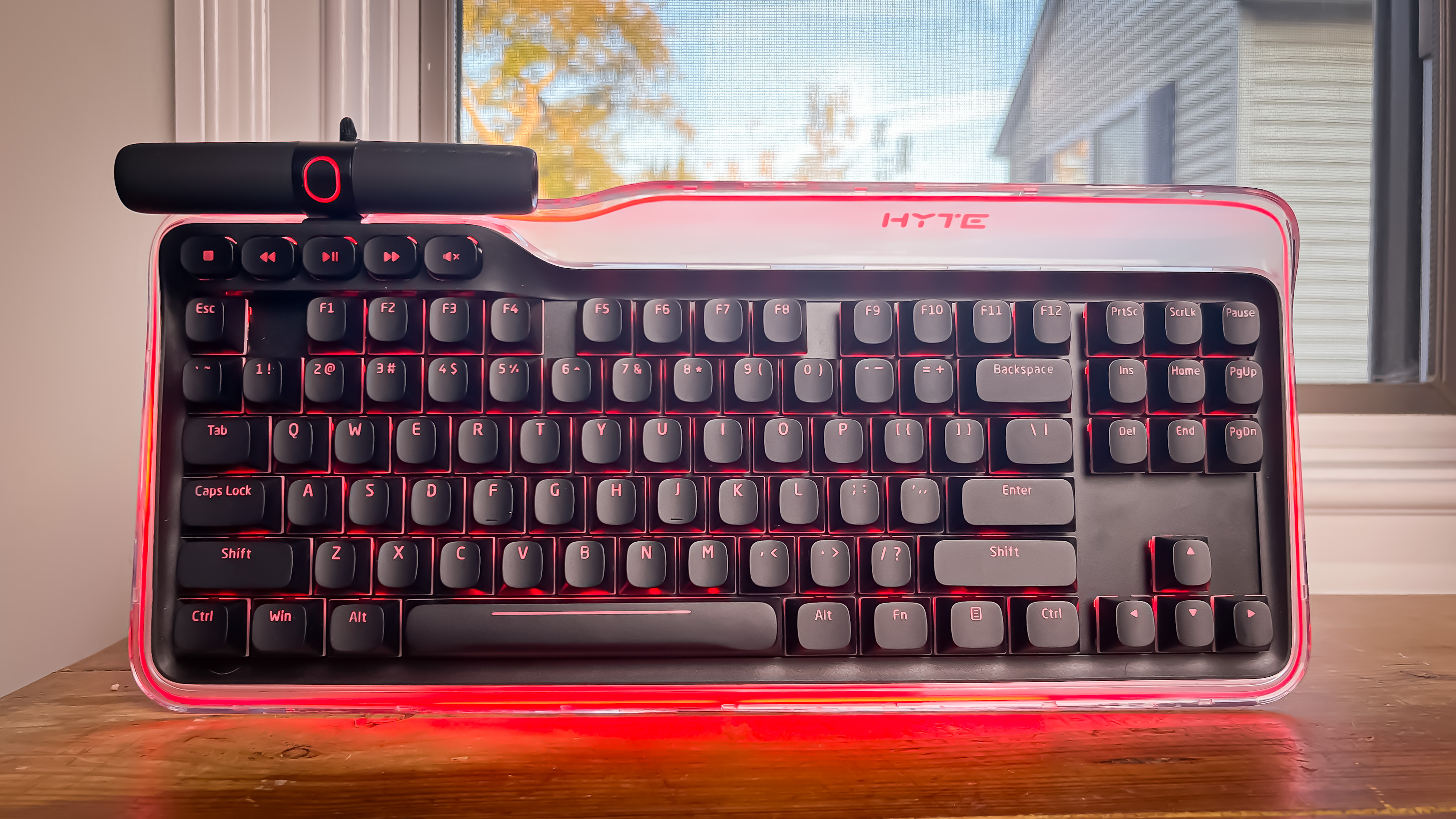Tom's Hardware Verdict
The Hyte Keeb TKL offers an impressive, enthusiast-level typing experience in a very unique package.
Pros
- +
Super smooth switches
- +
Great sound-dampening
- +
Unique bubble case aesthetic
- +
Durable double-shot PBT keycaps
Cons
- -
Awful keycap legends
- -
Rotary knob feels cheap / flimsy
- -
No per-key RGB
Why you can trust Tom's Hardware
Hyte has been positioning itself as one of the most creative computer peripherals companies, and the Hyte Keeb TKL is definitely... creative. The Keeb TKL is a tenkeyless mechanical keyboard with a gasket-mount design, a unique polycarbonate construction, and the most RGB that I have seen on a mechanical keyboard in a long time. The Keeb TKL comes with everything an enthusiast-tier plank should, including screw-in stabilizers and lubricated switches.
That said, it's not cheap — it retails for $180, which is close to what you'll pay for the best gaming keyboards. But the ultra-smooth switches and the surprisingly fantastic typing experience make it worth the premium price.
Specifications
| Switches | Hyte Fluffy Lavender Linear |
| Lighting | 155-Pixel aRGB lighting |
| Onboard Storage | Yes, 2 profiles |
| Media Keys | Yes |
| Connectivity | USB Type A |
| Cable | 6-feet, rubber |
| Additional Ports | 0 |
| Keycaps | Double-shot PBT |
| Software | Hyte Nexus |
| Dimensions (LxWxH) | 15 x 7 x 2 inches / 380 x 180 x 53mm |
| Weight | 2.7lbs / 1,224.7g |
| MSRP / Price at time of release | $180 |
Design of the Hyte Keeb TKL
The Hyte Keeb TKL is an enthusiast-grade mechanical keyboard with some gaming features, such as lightning-fast switches and a ton of RGB. I’m not personally a huge fan of RGB, but hey — it is kind of a vibe, especially with the Keeb TKL's unique "Crystal Bubble Polycarbonate Case." While polycarbonate is a pretty popular material for keyboard cases, I've never seen a keyboard case that's completely transparent.
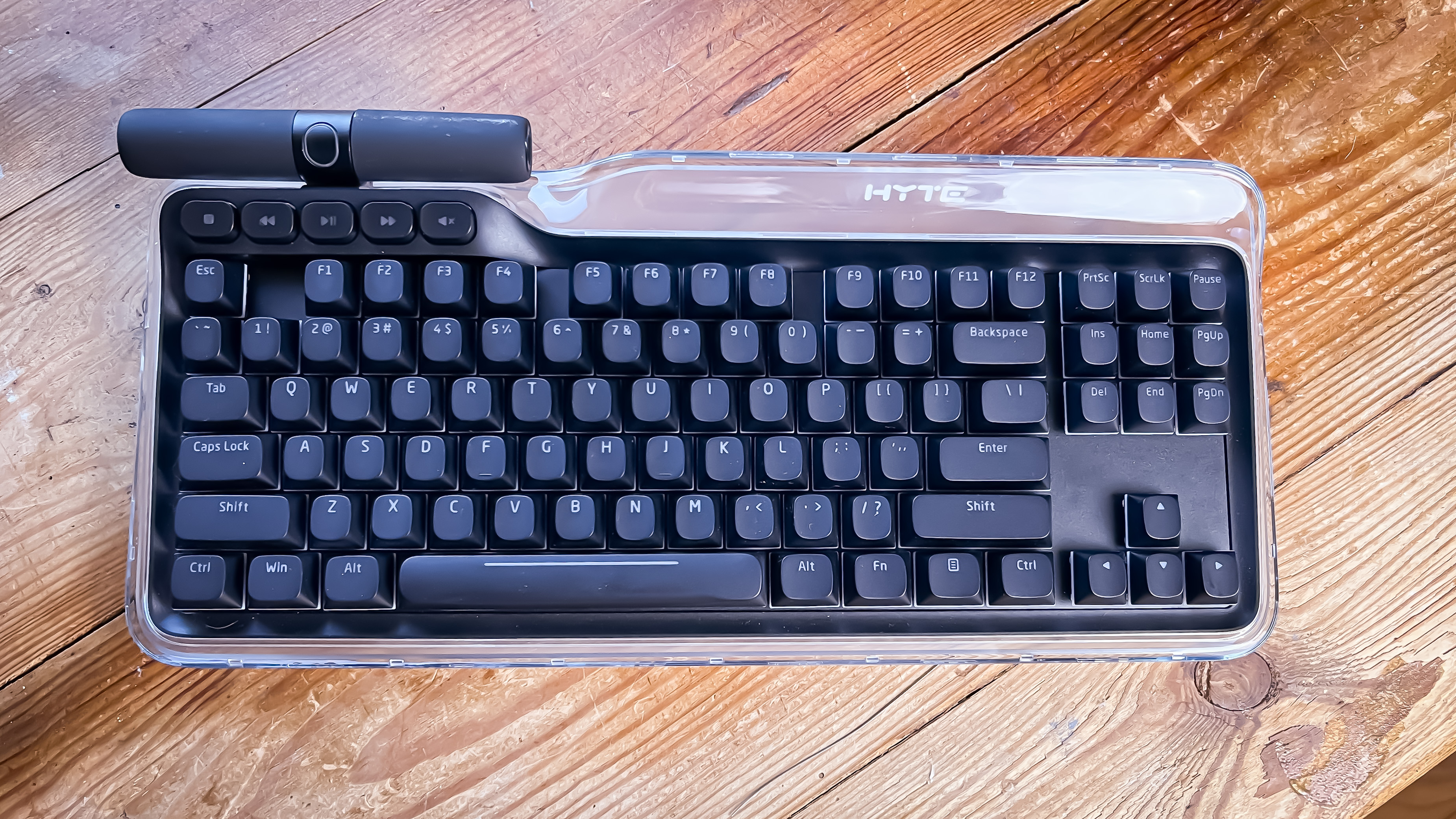
The bubble case actually looks great, if you're into the aesthetic. My concern is that polycarbonate plastic turns yellow over time, especially if it's exposed to the sun. To prevent this, I would recommend covering this board while you're not using it (or using it in a windowless room).
Given the way this keyboard looks, my expectations for sound-dampening were low. Many keyboard companies talk about sound-dampening, but I rarely see it implemented well — and this keyboard doesn't look like your typical heavy aluminum sound-dampened keyboard. However, the Hyte Keep TKL is dampened perfectly: it features three layers of sound-dampening foam and a sand-blasted anodized aluminum weight to really get rid of any ping, and it works. The keyboard sounds surprisingly great.

Somewhere in between all those layers of foam is a 5-pin PCB that seats Durock V2 screw-in stabilizers and Hyte’s own Fluffy Lavender linear switches. According to Hyte, the switches and stabilizers come pre-lubed — but I was skeptical. However, I ended up eating my words, because I have never received a keyboard that was ready to go without needing any sort of tweaking, but the Keeb TKL might just be the first.
The Hyte Keeb TKL comes with a giant dual-sided knob, which can be reprogrammed in Hyte Nexus. By default, the left side of the knob adjusts volume and the right adjusts RGB brightness. There’s also a programmable button in the middle that's set to cycle through RGB modes by default. While I love a rotary knob on a keyboard, this knob on the Keeb feels a little cheap and has a significant amount of wobble. It works fine, but it seems like you might need to be careful with it.
Get Tom's Hardware's best news and in-depth reviews, straight to your inbox.
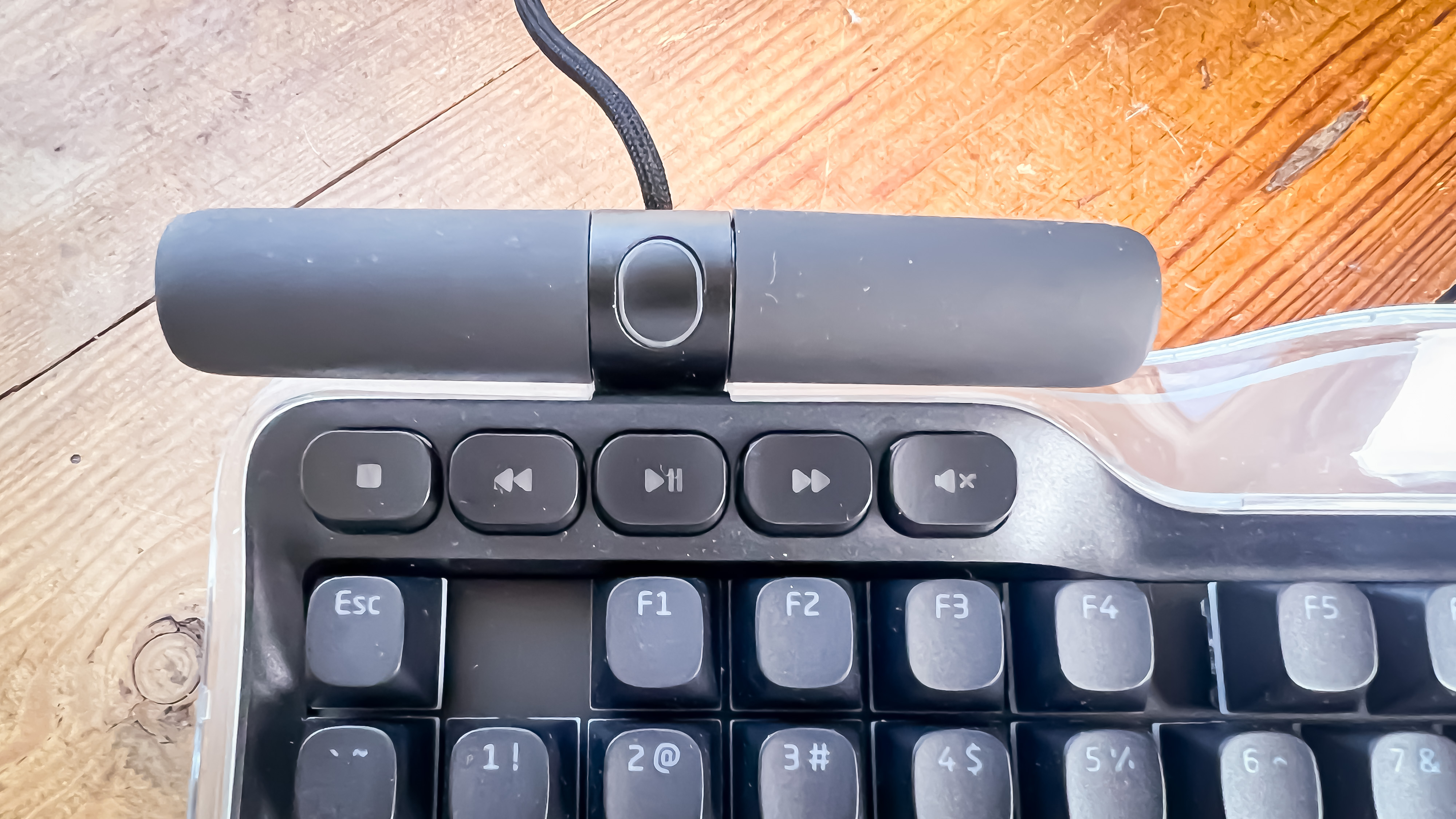
The Keeb TKL comes with double-shot PBT keycaps in Hyte's HX OEM profile, which feels identical to traditional, non-Cherry-profile keycaps. These keycaps felt fine but didn't look great: the legends were actually pretty terrible on the Backspace, Tab, and Caps Lock keys. You can, of course, swap the keycaps, but then they won't match the media keys (which are not swappable).
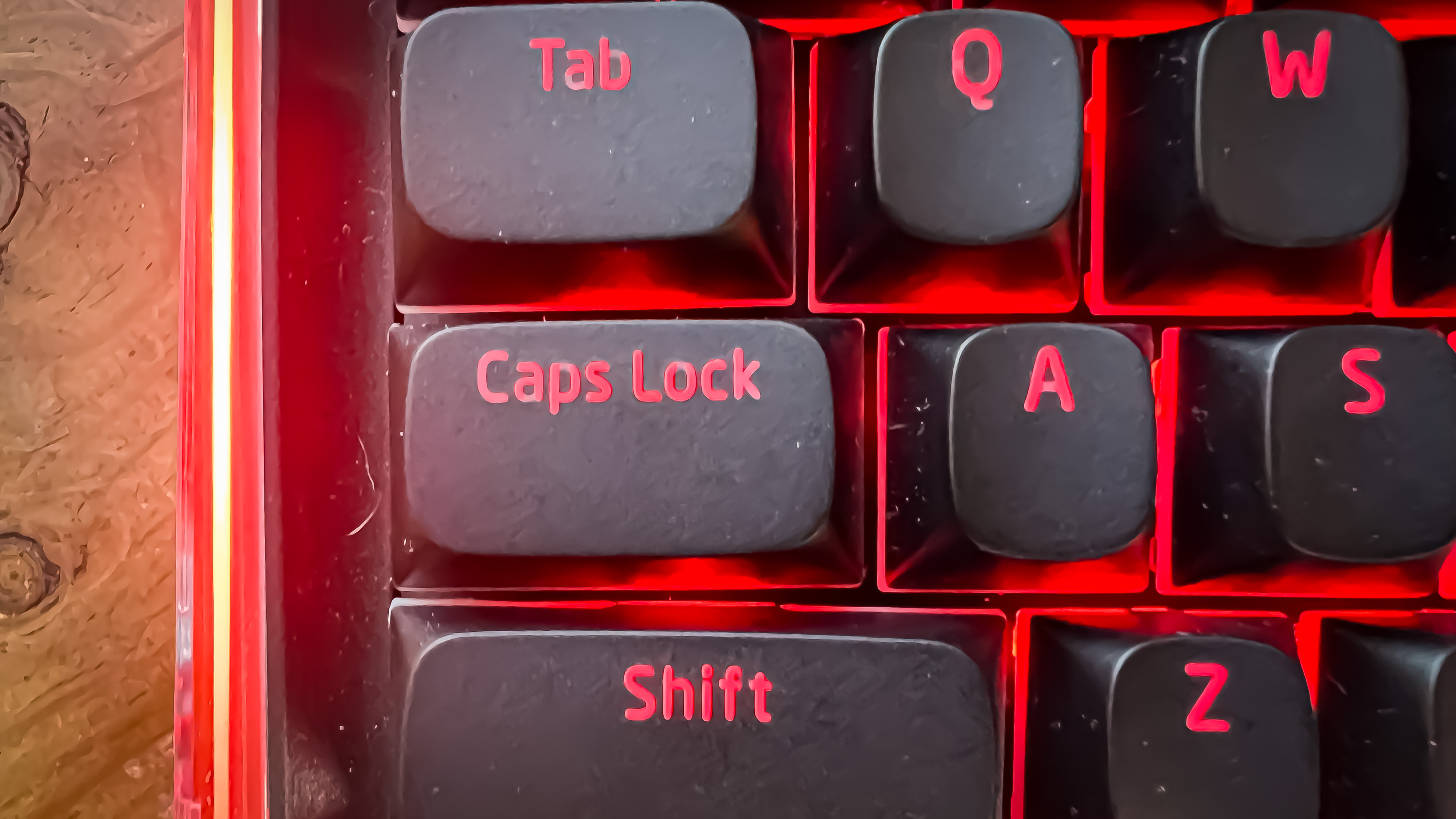
Typing and Gaming Experience on the Hyte Keeb TKL
The Hyte Keeb TKL is unlike any mass-produced gaming keyboard that I have typed on in a long time, and the reason is the typing experience. It features Hyte's Fluffy Lavender switches — not to be confused with CannonKeys’ Lavender switches. The switches feature a 36g actuation force, which is a little lighter than the popular Cherry MX Red switches (which have a 45g actuation force).
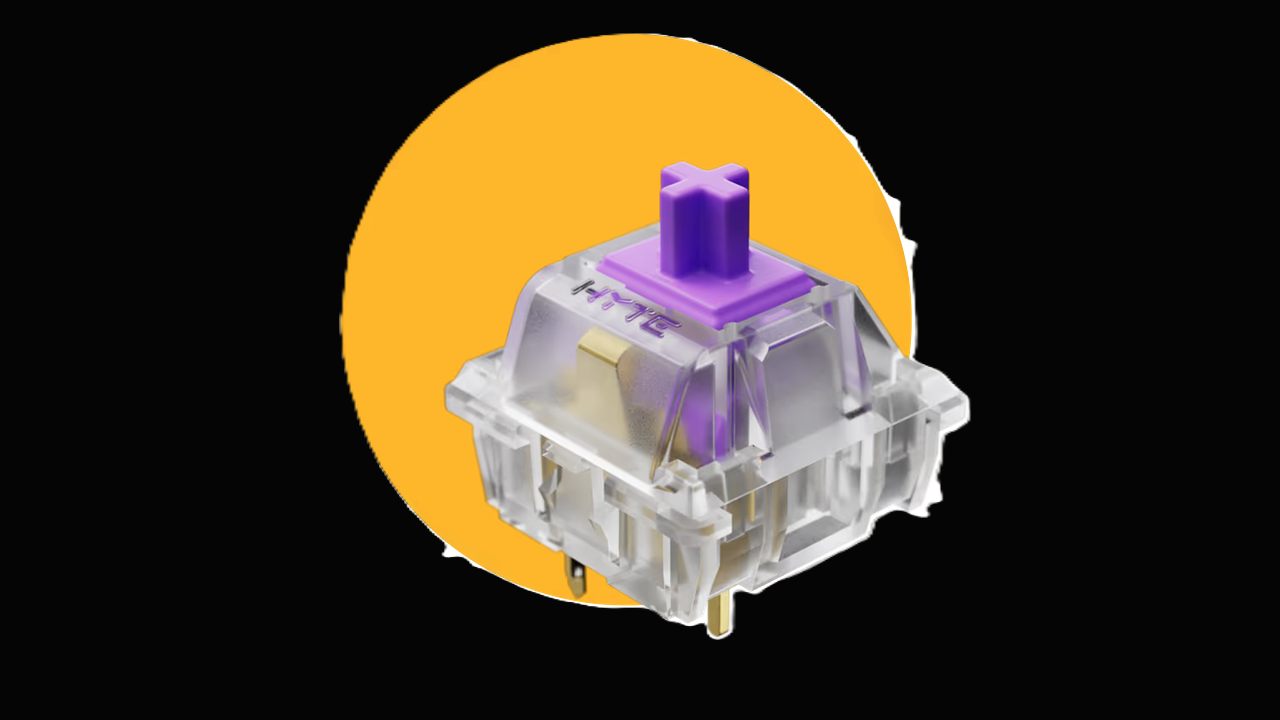
Because the switches have such a light actuation force, I had to be mindful when resting my hands on the keyboard when I wasn't typing. However, I was able to adjust after only a couple of hours of using the Keeb TKL, and the only typos after that were my own fault.
The switches are beyond smooth. I simply cannot emphasize how buttery these switches are. This is a big plus for the Keeb TKL, because I HATE lubing switches — it's messy, time-consuming, and expensive (Krytox 205g0 is not a cheap lubricant), and it's just nice to have smooth switches right out of the box.
While the Hyte Keeb TKL is a gasket-mounted keyboard, it lacks the bounce that this mounting style typically comes with — I say usually because I've used a lot of gasket-mount keyboards that don't have that bounce, but it is the feeling people typically associate with gasket-mounting. It's a bit of a letdown that the Keeb TKL lacks bounce, but it still sounds and feels fantastic. There was zero case ping, the stabilizers were perfectly balanced, and every bottom-out feels soft and supported.
The Flappy Paddle media keys, however, are the polar opposite of the Fluffy Lavender switches — they're low-profile Blue switches, and I was not a fan. I found them to be mushy-feeling and pingy.
There was no better time to test the Keeb TKL's gaming capabilities than now, with the release of Call of Duty: Black Ops 6. The Keeb TKL did fantastic in my gaming tests, which is what I expected. I primarily play the zombies mode, which forces you to be quick, and the Fluffy Lavender switches were perfect for that: I was able to strafe and dive around hordes of zombies (until round 37, when I was finally taken down by the hoard).
Software of the Hyte Keeb TKL
It’s been a while since I’ve used Hyte’s Nexus software and — like I said when I reviewed the Y70 Touch — it has a lot to offer.
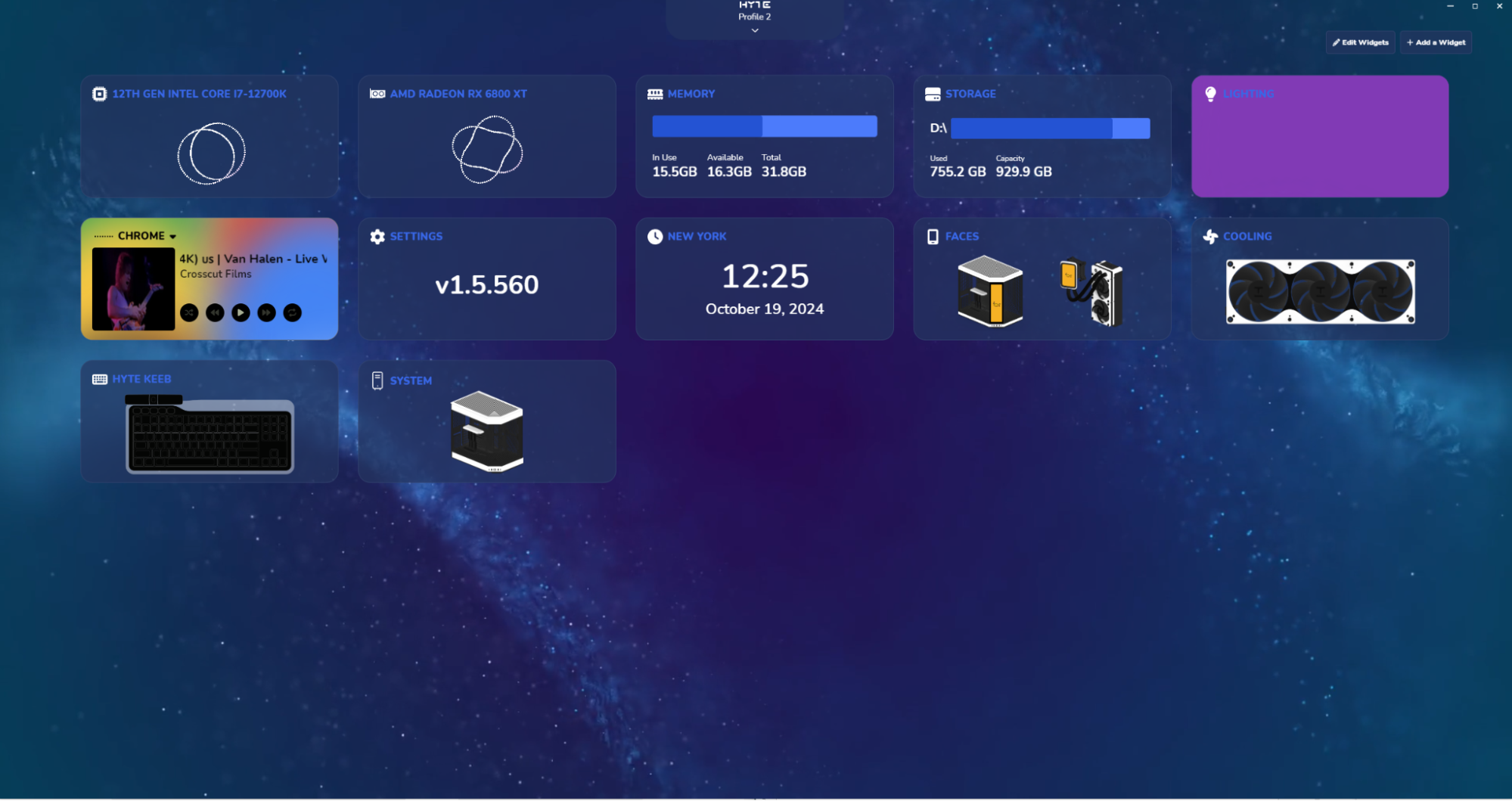
I found it funny (but perhaps a little bit genius) that Hyte lists its other products in its software, such as its water coolers, fans, and cases. It's almost like an ad, but it's not too in-your-face about it.
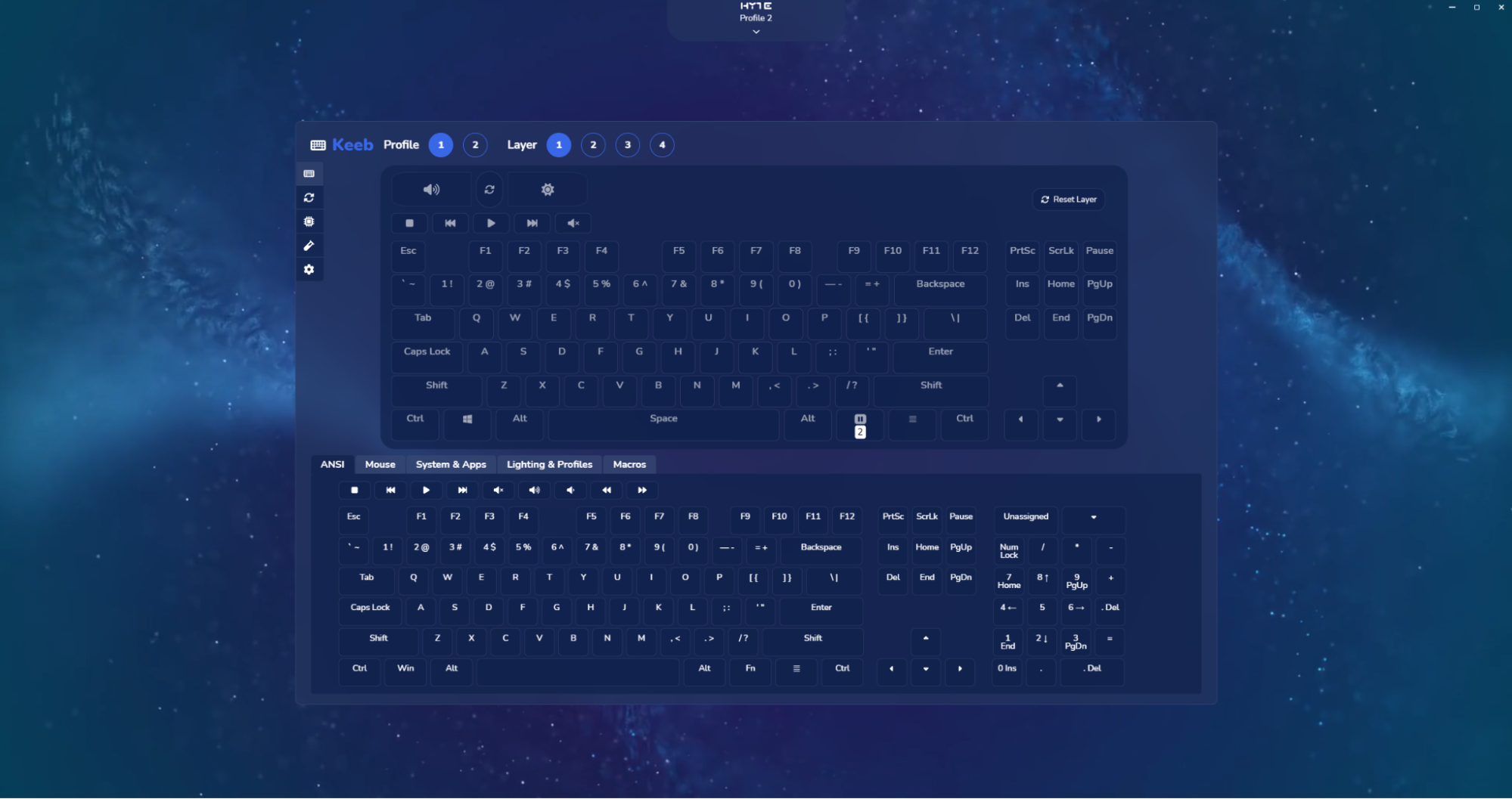
Key remapping on the Keeb TKL is very similar to the popular open source VIA software most higher-end enthusiast mechanical keyboards use. It seems like Hyte took notes from enthusiasts not only while designing the keyboard, but also while designing the software.
I looked around and around for quite a while, but unfortunately the Hyte Keeb TKL does not have per-key RGB. While this doesn't affect me much, it will definitely be a turn-off for those who are looking for a highly-customizable light show. Nexus does have a lot of other RGB customization options, including an audio visualizer option (which I always like), but it's not quite per-key RGB.
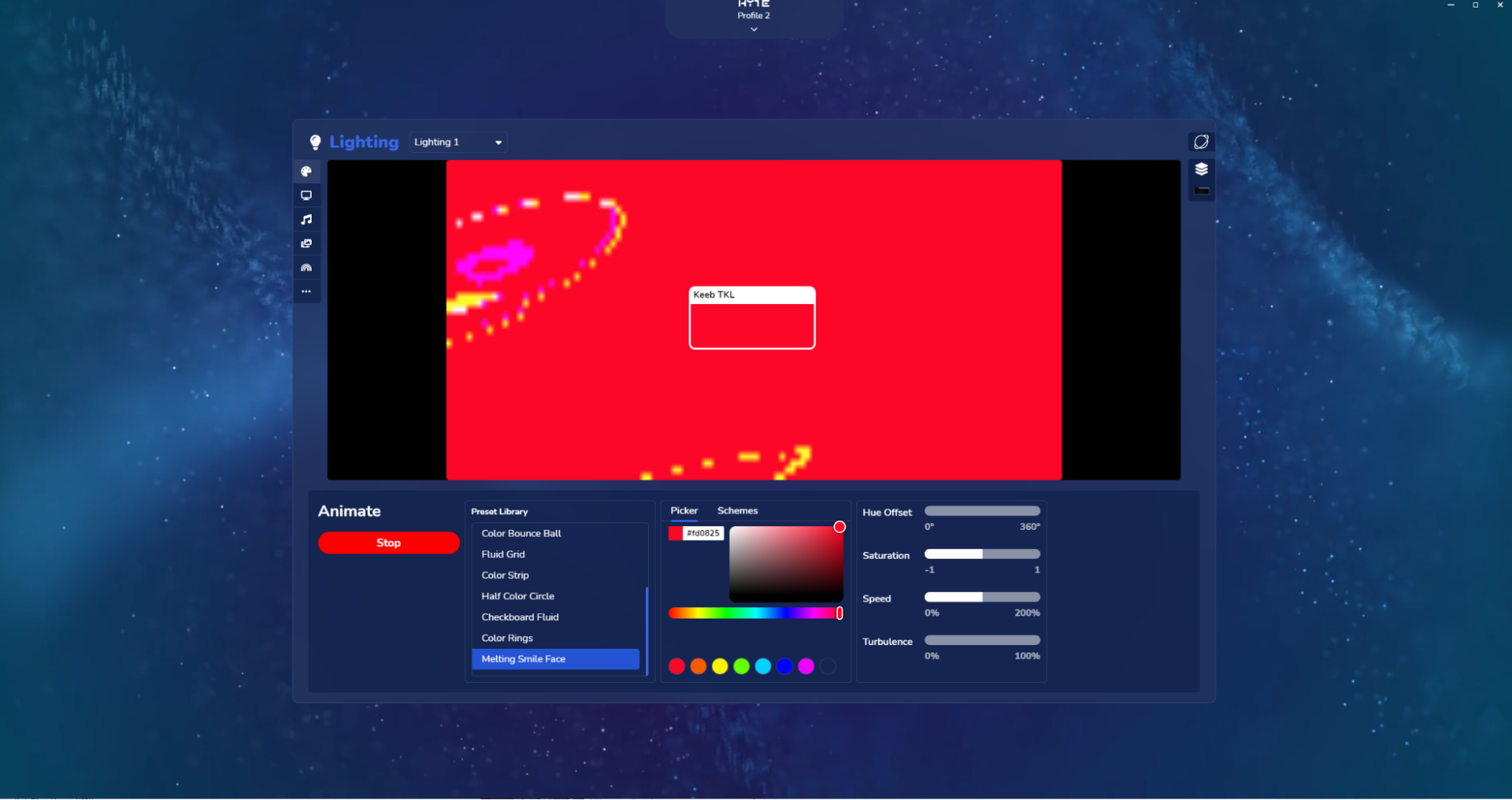
That said, after tinkering with the RGB for long periods of time, it started to look a bit psychedelic — so maybe you don't really need per-key RGB after all.
Bottom Line
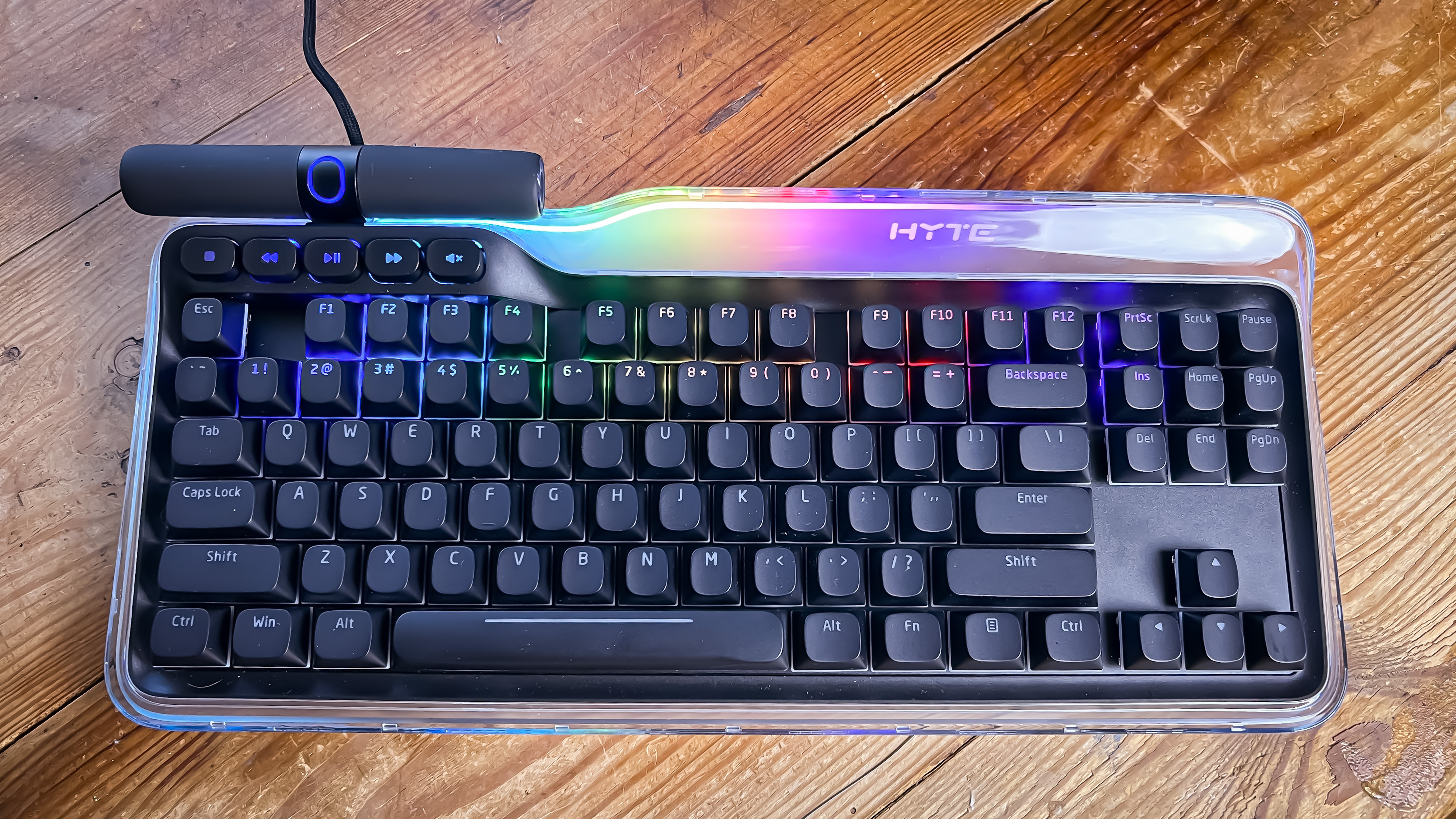
Overall, I really liked the Hyte Keeb TKL. I've reviewed a lot of Hyte's cases, so I was excited when I heard the company was expanding into keyboards, and the Keeb TKL didn't disappoint.
Despite the lackluster Flappy Paddle media keys and the lack of per-key RGB, the Keeb TKL is an excellent keyboard for both typing and gaming. Instead of purchasing a haul of mechanical keyboards from a third-party supplier and rebranding it, Hyte designed its own gasket-mounted mechanical keyboard with in-house switches, and the result is very impressive. While it is $180, which is on the pricier side, it's a unique-looking mechanical keyboard with excellent sound-dampening, ultra-smooth switches, and an enthusiast-grade typing experience — which is pretty crazy for less than $200.
If you're looking for something a little more aimed at gamers, the similarly-priced Arbiter Studio Polar 75 Pro also sounds and feels great, offers an enthusiast-grade typing experience, and has magnetic Hall Effect switches, which allows for features such as "Snap Tap" (SOCD) and Rapid Trigger.
MORE: Best Gaming Keyboards
MORE: How to Pick Keycaps for Your Mechanical Keyboard
MORE: How to Build a Custom Mechanical Keyboard

Myles Goldman is a freelance writer for Tom's Hardware US. He reviews keyboards and cases.
-
edzieba ReplyWhile polycarbonate is a pretty popular material for keyboard cases, I've never seen a keyboard case that's completely transparent.
Never seen an original (G3, with the CRT) iMac keyboard then? -
Sleepy_Hollowed Talk about niche, only linear switches is a big no for anyone that wants to also type without losing their mind with accidental key presses.Reply
